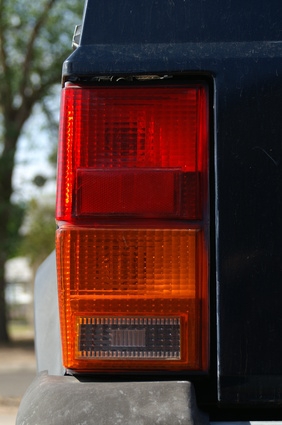
Tail lights that are not working can result in a ticket or an accident. Most problems that cause tail light failure are easy and inexpensive to repair once they are properly diagnosed.
When a single tail light stops working, the first thing to look for is a burned out bulb. Tail lights on many cars are accessed behind the trim in the trunk of the vehicle. On some vehicles the tail light lens cover must be removed to access the bulb. Once the bulb is removed it can be examined to determine if one of the filaments is broken, which will require the bulb to be replaced.
If multiple lights fail at once, a blown fuse is the likely problem. The owner's manual for the vehicle will indicate the location of the fuse box as well as the position of the tail light fuse -- this may be noted on the fuse box as well. The fuse is inspected by looking at the thin metal strip inside the fuse to see if it is broken.
If neither the bulb nor fuse is blown, damaged or loose wiring might be the cause of the problem. Check wiring near the tail light and under the car for damage. Check connections to make certain they are solid and the internal surfaces are not corroded.